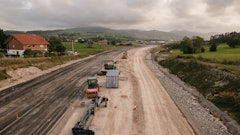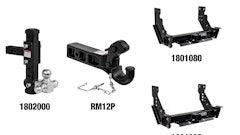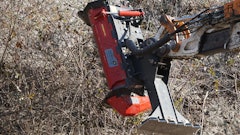Does safety pay - silly question, isn't it? Of course it pays. The real questions should be: "Do you have a formal safety program, do you follow it, do you lead by example and do you monitor results?" If you can answer "yes" in each case, you likely have more profits and cash to show for it due to lower insurance costs, reduced maintenance expense and less downtime.
All in all, a safety program should be a win-win for both you and your employees. But having a safety program and making sure it is used properly are two different things.
A safety program means having a formal document for all employees to follow. You will probably have at least an annual program, with additional programs added as new types of equipment are utilized or new projects attempted.
It also means enforcing the program, and making sure employees who violate safety policies hear about it. Any compliance issues with the program should be documented in the employee's service record.
You can't get away from the fact that certain employees will try to push the envelope. Give them an inch and they will take a mile. Consequently, employees must be educated as to the benefits of safety programs, and encouraged to work as a team to make safety a priority. Hopefully, this approach will have employees police themselves and even stop unsafe acts before they are committed. After all, it is in each employee's best interest to reduce the risk of injury to personnel or damage to equipment.
Management also needs to consistently comply with the safety rules. If they don't, it's tough to expect other personnel to do the same. Sure it may take some time, and sure it may be a pain in the backside. But what manager wants to incur a claim on their watch, especially if it involves an injury to an employee?
Program elements
How do you set up a safety program? What should it contain? How often should you offer training? How do you track compliance? What do you do when incidents of non-compliance occur? These are all questions that should be considered, because once you say you have a safety program, you really must enforce it and be able to prove that you did so. To do otherwise could generate a legal liability.
All of the questions noted above can be addressed by your insurance company, insurance agent and equipment dealers. Both you and your insurance company have a vested interest in keeping loss claims to a minimum. Your insurance provider will tell you what you need in terms of a formal program, and provide training as required. Equipment dealers can provide training on the specific equipment they sell to you.
There are also video training programs available that allow employees to undergo training as they have time. However, the best way to ensure this training takes place is to make it mandatory (with attendance records kept), or to have employees view web-based programs on site.
The tough part is monitoring training to make sure all personnel are in compliance before using a new piece of equipment or before new employees do any work for the company. Every foreman or manager needs to make sure crews are in compliance before they are allowed to use equipment on the job. And as employees are reviewed for performance and/or salary adjustments, the personnel file should be checked for all the appropriate training.
Insurance is serious business. Loss claims increase your premiums, increase your repair costs and lead to workman comp claims. In general, they reduce the value and operating performance of your business. Firms that have an active, formal safety program have fewer and/or smaller claims and reduced legal liability.
Get safety and accounting in sync
So what's the first step if you don't have a safety program in place? Select a safety officer. This person is responsible for setting up the program from an administrative standpoint, as well as establishing the program contents and making arrangements for qualified instructors.
The safety officer must be kept in the loop when new equipment arrives on the scene. Having the company accountant notify the safety officer that a new unit is being purchased would be appropriate.
The company accountant also needs to notify the safety officer when new people are hired so he/she can assess their need for safety training. At a minimum, new employees should be briefed on company policies, with this discussion documented in their personnel file.
Having the safety officer and accounting department work together in this manner will keep time and cost to a minimum. Outsourcing training will also help.
Take action
Actions taken for non-compliance should be communicated to employees when they start with the company, as well as when they are told they violated a safety policy. Constant violators should be terminated, or other employees will feel they do not need to comply.
Keep your losses to a minimum - install or update your safety program today. ?
Safety Program Necessities
|
Garry Bartecki is director of dealer/distributor services at BDO Seidman, LLP of Chicago, as well as a consultant to the AED. He has also worked as an independent CPA and consultant to equipment dealers. He can be reached at (312) 616-4677 or [email protected].



























